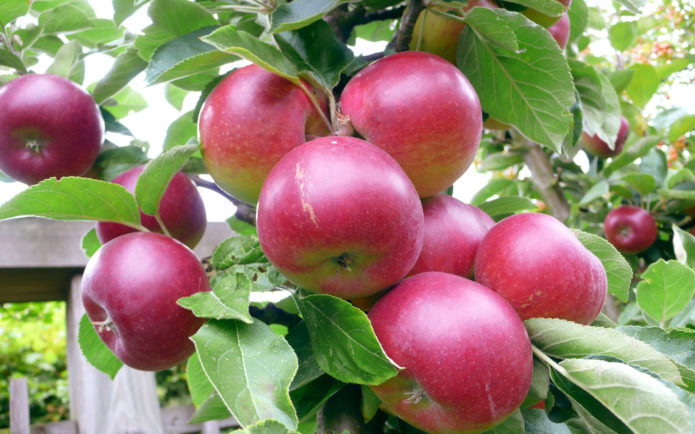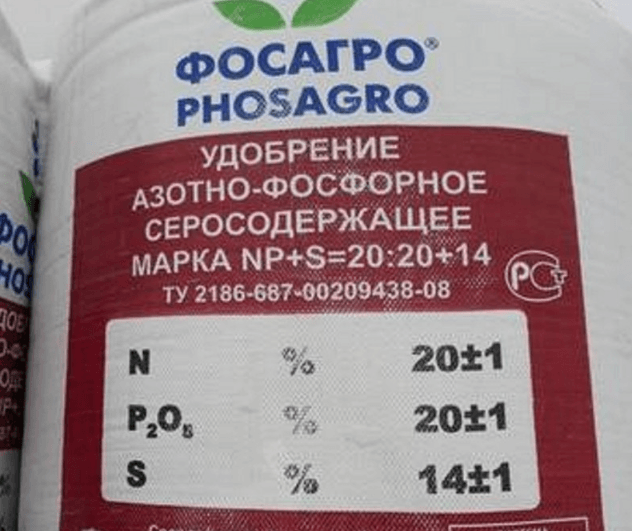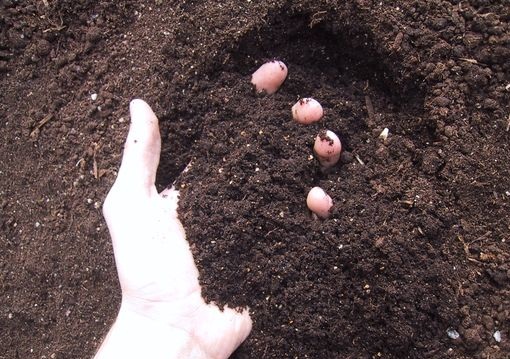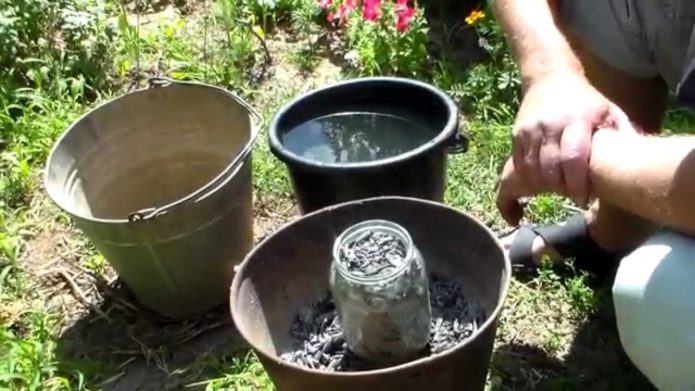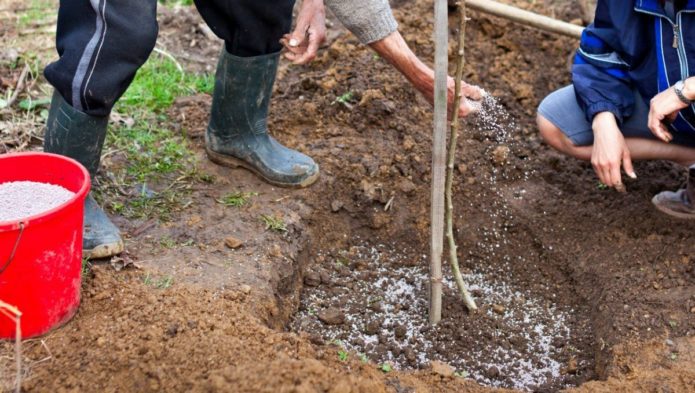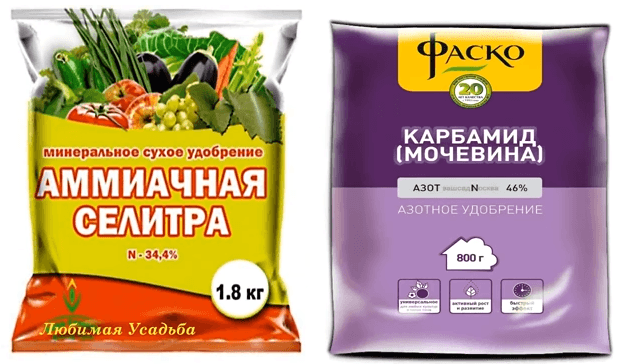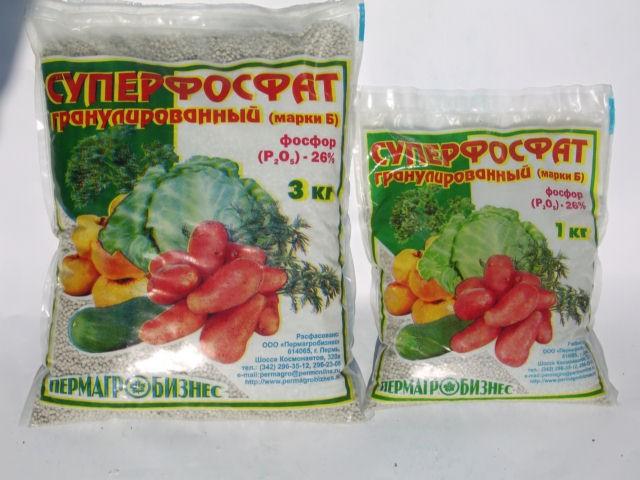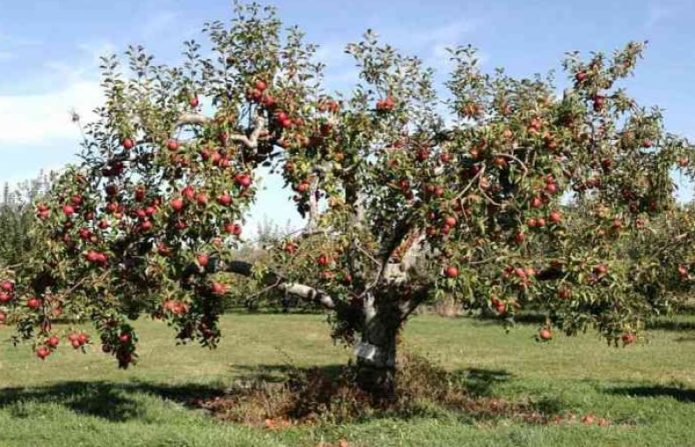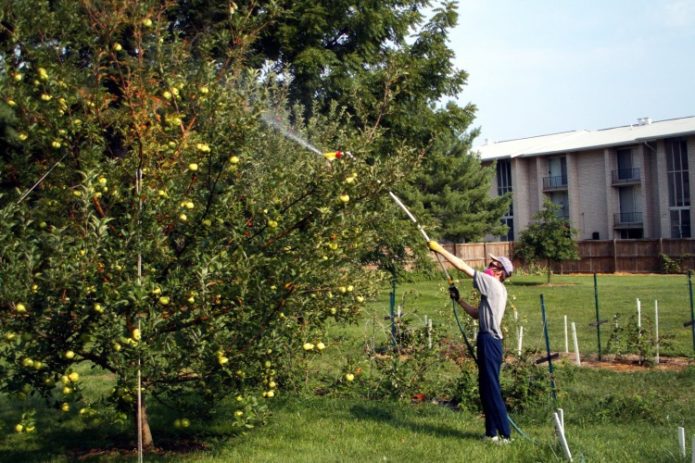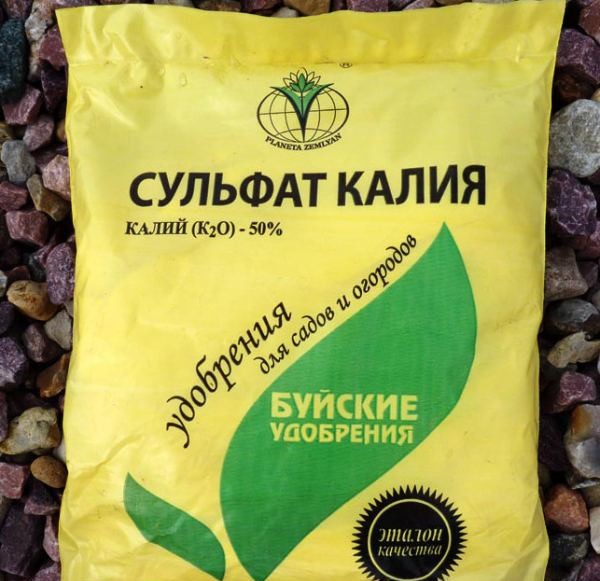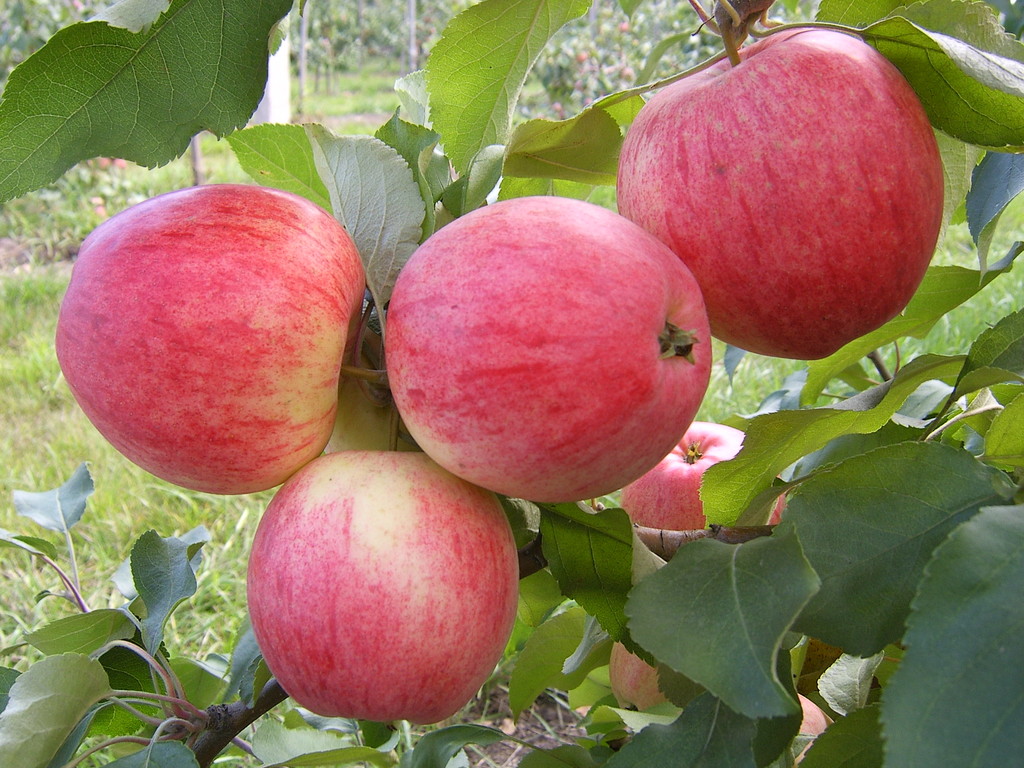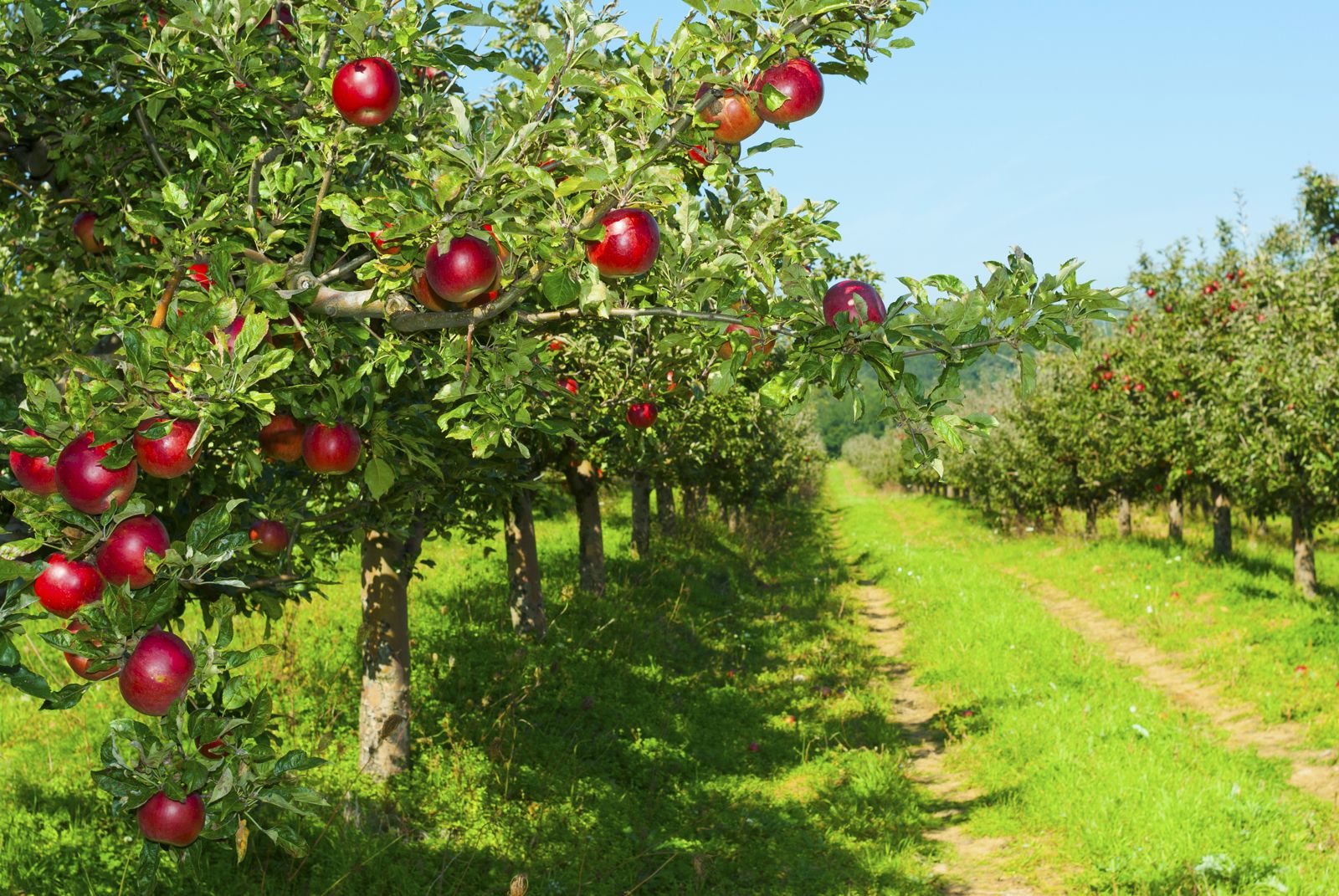There are many different fertilizers sold in stores, each containing specific nutrients that plants need. In addition, in any garden there is an opportunity to prepare natural dressings without chemicals. With certain knowledge, the productivity of an apple tree can be maintained for many years without spending a penny. And in inexperienced hands, even the most expensive complex mixtures can do more harm than good.
Content
The value of fertilizers and fertilizing for the apple tree
Soil, even the most fertile, depletes over time. The apple tree grows in one place for 20-30 years and longer. She spends nutrients that were in the ground when planting, while still a young tree. It turns out that in the years of fruiting, when even more food is needed, there is none at all. As a result, the fruits grow small and sour. The tree starts to ache. The gardener scolds the seller of the seedling and the breeder, but in fact he is to blame: he did not apply fertilizer, did not give fertilizing, the apple tree has nowhere to take the strength to withstand unfavorable conditions and increase rich yields of sweet fruits.
Types of fertilizers for apple trees
The same fertilizers are suitable for the apple tree as for any other garden or vegetable garden. Only dosages and frequency of application are individual. So, for trees, the consumption goes for 1 m² of the trunk circle. Young apple trees need only two dressings per season, and fruiting ones need up to four root and one or more sprays on the leaves, depending on the state of the tree.
All fertilizers can be divided into three broad categories:
- Mineral:
- simple, that is, containing any one nutrient, urea and ammonium nitrate - nitrogen, superphosphate - phosphorus, various potassium salts - potassium;
- complex, consisting of two or more macro- and microelements (nitroammophoska, potassium magnesium, diammophos, various mixtures with microelements under the names: "For the garden and vegetable garden", "For fruit and berry crops", etc.).
- Organic. This can include: compost, humus, green manure, manure, droppings. All these materials are rich in nitrogen, they contain potassium and phosphorus, but in much smaller quantities. Organic is a natural complex fertilizer with microelements, but there is no exact formula for it: how much of which element is contained in a percentage.
- Organomineral. In the store you will recognize them by their name or composition, which contain the word "humus" or part of it: Gumi-Omi, sodium humate, BioHumus, humofoska, etc.Usually such mixtures contain a complex of macro / microelements and humus (humic acids) - decomposition products of organic waste (manure, plant residues, etc.).
What fertilizers to apply when planting
So much fertilizer is applied to the planting pit so that it will last for at least the first 2-3 years. Apple nutrition from the very beginning should be complex, that is, contain all three macronutrients necessary for any plant: nitrogen, phosphorus and potassium. They are found in humus or compost, as well as in mineral fertilizers and wood ash (phosphorus and potassium).
Fertilizer options and dosages per planting pit:
- Classic, natural and the best complex: humus or compost - 2–4 buckets, depending on the size of the pit (its dimensions: depth 60–80 cm, diameter 60–100 cm) and wood ash - 1–2 kg per seedling. Mix the fertilizers with the soil removed from the upper 30 cm when digging the hole, and fill the hole with the resulting soil mixture.
- If there is no wood ash, replace it with superphosphate - 120-200 g and potassium sulfate - 100-300 g.
- If there is no humus and compost, place a 20–30 cm thick pillow of weeds, fallen leaves, thin twigs, and kitchen waste on the bottom of the pit. Mix soil removed from the top 30 cm with 1 kg of ash and fill the hole.
Video: what to bring into the planting hole
It is easy to conclude that ash and phosphorus-potassium fertilizers are interchangeable. But the supply of organic matter during planting cannot be replaced with a large amount of mineral nitrogen fertilizers. Urea, ammonium nitrate, nitroammofoska, in contrast to phosphorus-potassium fertilizers, are easily dissolved by melt, rainwater and irrigation. The salt solution goes to a depth inaccessible to the roots. And with insufficient or moderate soil moisture, on the contrary, highly concentrated salt solutions are formed, burning the roots of the seedling. It will not take root well and slowly open the kidneys. That is why you will not find dosages for the planting pit in the instructions for such fertilizers, their purpose is feeding during the growing season and applying for annual vegetables during digging.
Top dressing for young apple trees
With a good filling of the planting pit, top dressing begins no earlier than 3-4 years after planting. If you just made a hole in the size of the roots and buried it with excavated soil, then start feeding from the next season. In both cases, the fertilization rates and the spreading pattern will be the same.
What, how much and in what period to bring under a young apple tree:
- In early spring, as soon as the earth thaws - fertilizer containing nitrogen: infusion of mullein (1:10) or droppings (1:20), solution of ammonium nitrate or urea (2 tablespoons per 10 liters of water). Consumption - 10 liters for one tree.
- In autumn, during leaf fall - 1.5-2 tbsp. l. superphosphate and potassium sulfate or a glass of wood ash for each square meter of the trunk circle. Make a 30 cm deep groove along the periphery of the crown, sprinkle fertilizer evenly, water and level.
Top dressing for a fruiting apple tree
A fruiting apple tree, unlike a young one, needs an even more abundant and varied diet.Microelements are responsible for the taste of apples, they also affect the quality of the ovary, the correct shape of the fruits, their keeping quality, as well as the resistance of the tree to diseases and adverse weather conditions. Trace elements play the same role for plants as vitamins do for us, but without basic nutrition they are useless. The apple tree still needs: nitrogen, phosphorus and potassium.
There is one more nuance: all fertilizers (liquid and dry) no longer make sense to pour and pour into a hole under a tree. In an adult apple tree (from 5–6 years old), the suction roots are located within a radius of 1–2 m from the trunk. This means that food must be brought into this zone. If you use dry fertilizers, be sure to water the soil before and after fertilizing, or do it in rainy weather.
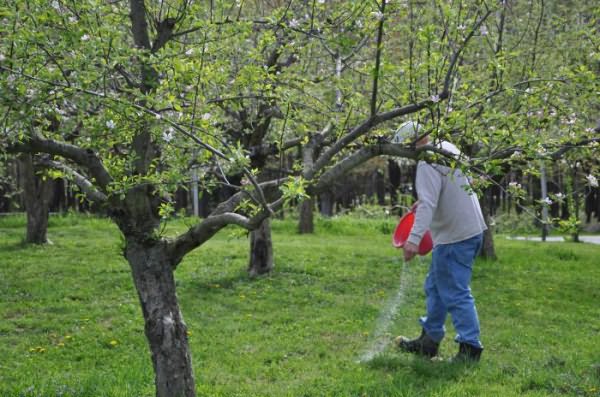
To feed an adult apple tree, fertilizers are poured and poured along the periphery of the crown, and not under the trunk
Technologies for applying dressings for an adult apple tree:
- Lay an annular groove around the crown perimeter with a depth of 30 cm.
- Make several holes (9–12) wide and deep on the bayonet of the shovel around the apple tree.
- Move the ground apart: in several places around the circumference, stick a shovel on a bayonet and swing it back and forth to make a narrow depression. This method is best done together: one pushes the soil apart, the other pours or pours fertilizer into the formed hole.
Video: how easy and simple to make holes for feeding a tree
Liquid fertilizing for one tree will require 4–5 buckets. The application rate of dry mineral fertilizers per 1 m² is the same as for young ones, but the near-trunk circle is larger (5–8 m²), which means that instead of 30–45 g of urea or superphosphate under one tree, 150–360 g will be required.
Fertilizers for spring
In the spring, the apple tree needs to be given two dressings:
- In early spring, at the beginning of the growing season, add one thing:
- 30 g of carbamide (urea) or ammonium nitrate per 1 m². Even if the dosage is given to the entire area of the near-trunk circle, apply fertilizer, as already mentioned, along the crown circumference, stepping back from the trunk.
- 5-6 buckets of humus, scatter in the feeding area and mix with the top layer of earth.
- Fermented infusion of mullein (1:10) or bird droppings (1:20) - 40-50 liters around the circumference of the tree.
- At the very beginning of flowering, give a mineral or natural dressing of your choice:
- 40 g of potassium sulfate, 50 g of superphosphate and 25 g of urea per 10 liters of water. Dissolve superphosphate separately in warm or hot water, and then combine with the rest of the components.
- Fermented infusion of weeds or nettle only (1: 5). You can create recipes yourself by adding phytosanitary: celandine, yarrow, calendula, garlic or plants rich in some specific element. For example, wormwood is a natural source of phosphorus, and meadow grasses are potassium. In each bucket of herbal infusion, shake a glass of ash and pour until the solids have settled.
Wood ash contains not only potassium and phosphorus, but also all the microelements necessary for the apple tree: magnesium, calcium, sodium, sulfur, boron, manganese, etc.
If you want to make your work easier, if possible, buy ready-made complex mixtures for the garden: Fertika, Pure Leaf and others, which are intended for spring feeding. However, such mixtures, as a rule, are more expensive than conventional fertilizers, and their consumption is higher. They contain all the same minerals, and some also contain humus, but in a balanced form. Measure, mix, no need to insist.
Fertilizers for summer
In summer, only one root dressing is given, immediately after the formation of ovaries:
- complex fertilizer with microelements, for example, the well-known Fertika (former Kemira), Agricola, etc .;
- wood ash - a glass of 10 liters of water;
- nitroammophos - 25 g and sodium humate - 4 ml (10% concentrate) per 10 liters of water.
Video: about the composition, benefits and application of sodium humate
Foliar dressing
In addition to root dressings, there are foliar dressings - by leaves.They are carried out from the beginning of the growing season and throughout the summer, ending a month before harvesting. The interval between treatments is at least 2 weeks. However, such nutrition cannot become the main one, it maintains only the leaves and partially the fruits, and not the entire tree as a whole, in good condition.
Foliar dressing options:
- In early spring, if for some reason could not apply nitrogen fertilizers at the root, spray with a solution of urea over the foliage and shoots (1 tablespoon per 10 liters of water).
- To form more ovaries, flowers can be sprayed with boric acid solution (2-3 g of crystals per 10 l of water).
- Almost all complex fertilizers for the garden from the store are suitable for both types of fertilizing, but for foliar fertilization the concentration is lower. This should be written on the packaging.
- The ash infusion is also well absorbed by the leaves: pour 2 liters of hot water into a glass, let it cool and bring the volume to 10 liters.
- Growth stimulants (Epin, Novosil, Energen) help the apple tree more easily survive temperature extremes, frost, heat, increase its resistance to diseases and pests, and have a positive effect on yields.
Fertilizers for autumn
The last dressing is done after harvest. It consists of phosphorus-potassium fertilizers: 40-60 g of superphosphate and potassium sulfate per 1 m². As a result of their introduction, the ripening of the buds improves, which will bloom next year, the resistance to diseases increases, the apple tree will more easily survive the winter. Fertilizers are applied at the end of the growing season, when the tree stops feeding, so the indicated dose will also be enough for the spring, until next summer. During the warm season, phosphorus and potassium strengthen the root system and participate in fruit formation. In stores you can find ready-made mixtures for the fall. Nitrogen fertilizers cannot be applied in the second half of summer and autumn!
Each apple tree - individual nutrition
For full development, an apple needs: nitrogen, phosphorus, potassium and trace elements. Each fertilizer has its own favorable application period: for nitrogen - spring, trace elements - summer, phosphorus and potassium - the whole season, but optimally - autumn. You can use ready-made mixtures from the store, simple or complex mineral fertilizers. Lovers of everything natural, of course, will choose home organic matter, ash, in extreme cases - fertilizers containing humus. The main thing is not to overdo it. Watch your apple tree, give feeding only if it really needs them.
